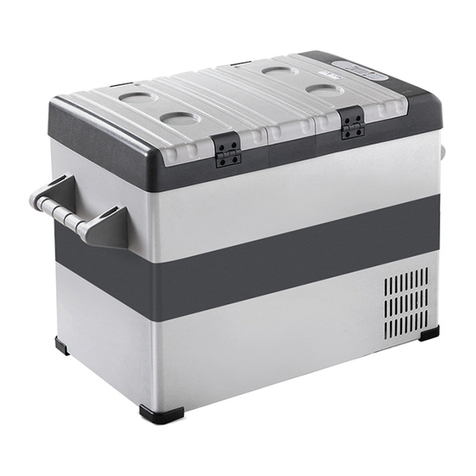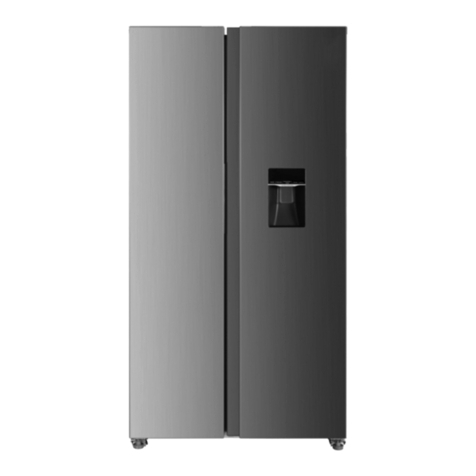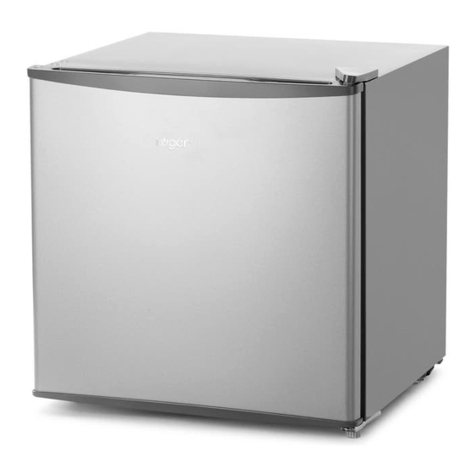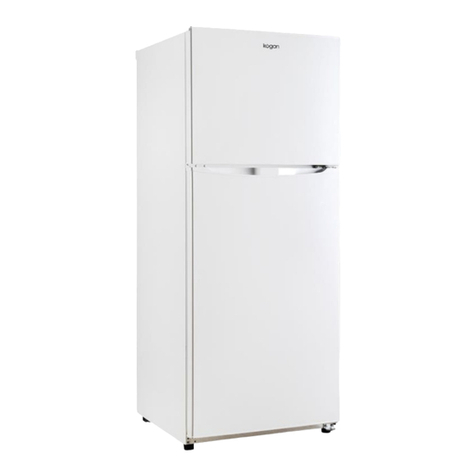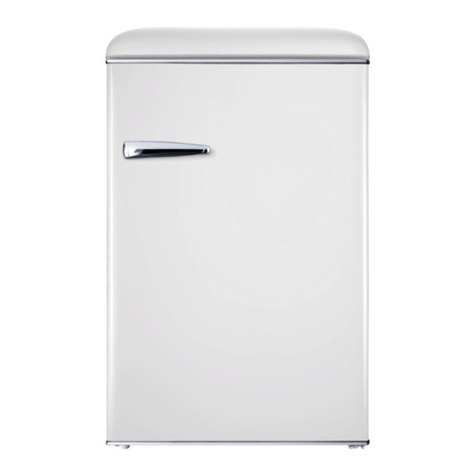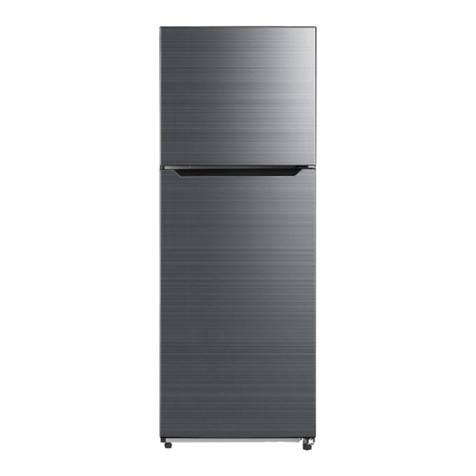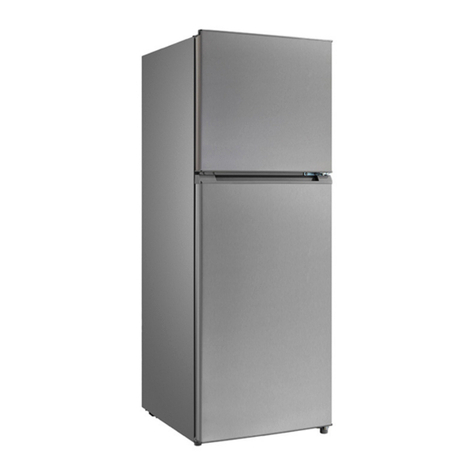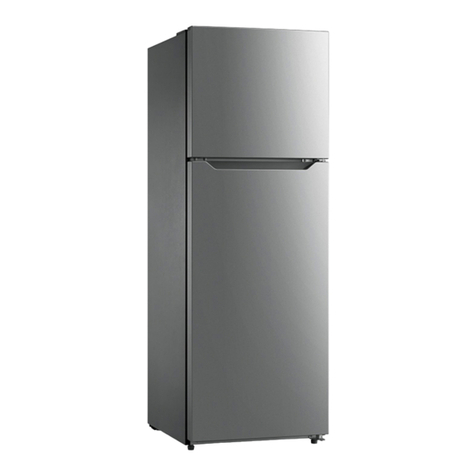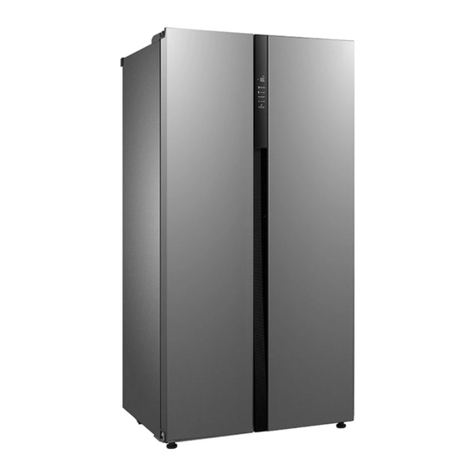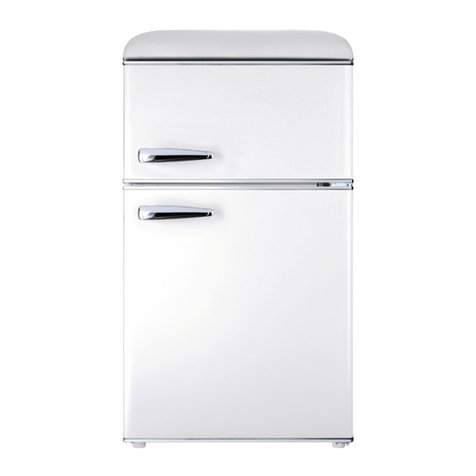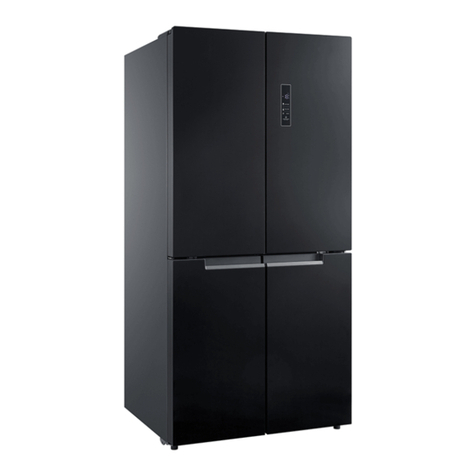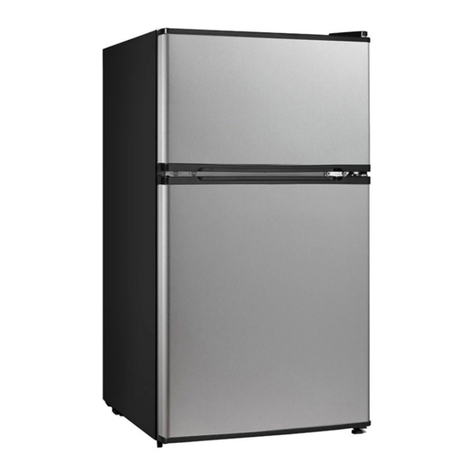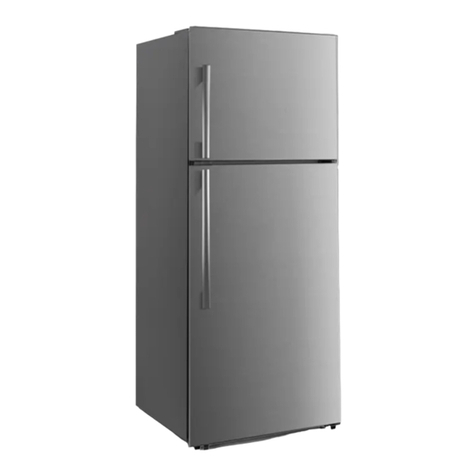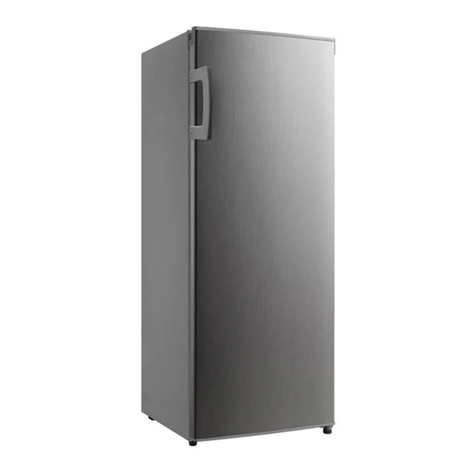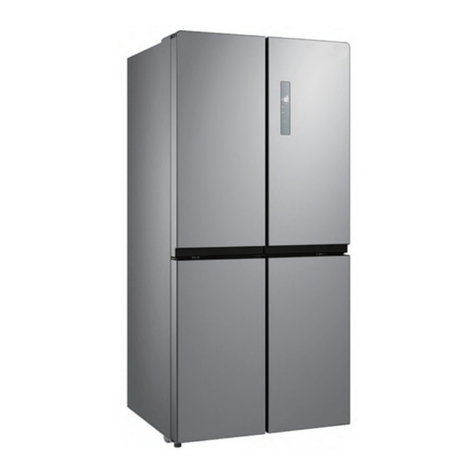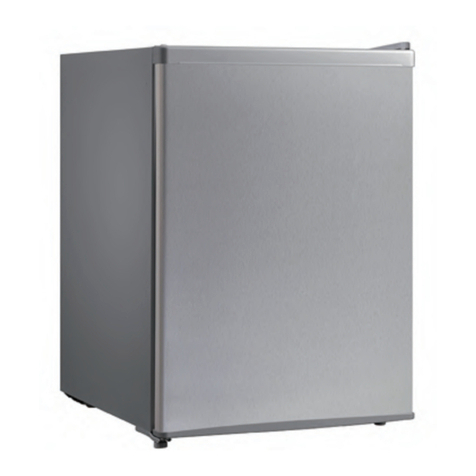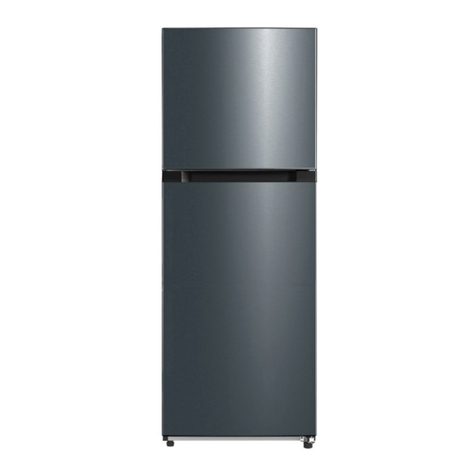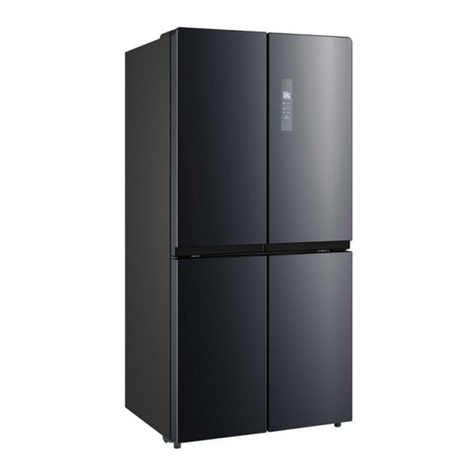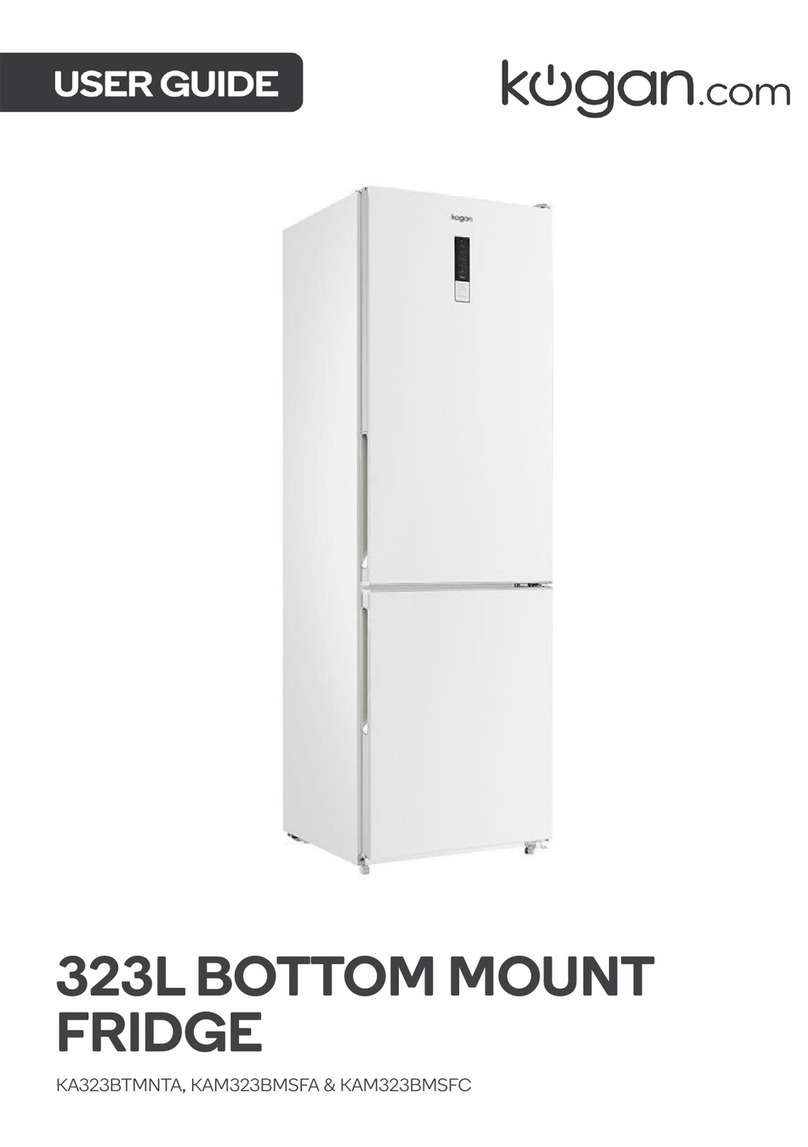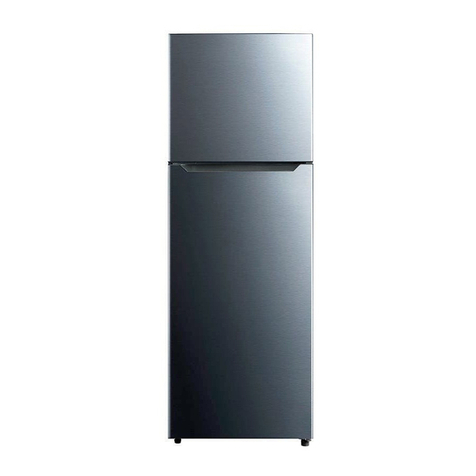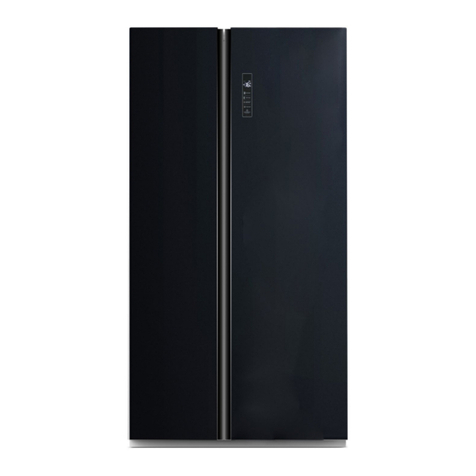
Warnings for placement
•Do not put flammable, explosive, volatile and highly
corrosive items in the refrigerator to prevent damages
to the product or fire accidents.
•Do not place flammable items near the refrigerator to
avoid fires.
•The refrigerator is intended for household use, such as
storage of foods; it shall not be used for other
purposes, such as storage of blood, drugs or biological
products, etc.
•Do not store beverages or other fluid contained in
bottles or enclosed containers, especially carbonated
ones, in the freezing chamber of the refrigerator;
otherwise, the bottles or enclosed containers may
crack due to expansion during freezing.
Warnings for energy
•Refrigerating appliances might not operate consistently (possibility of defrosting of
contents or temperature becoming too warm in the frozen food compartment)
when stored for an extended period below the cold end of the range of
temperatures for which the refrigerating appliance is designed.
•Do not exceed the storage time(s) recommended by the food manufacturers.
•The precautions are necessary to prevent an undue rise in the temperature of the
frozen food while defrosting the refrigerating appliance, such as wrapping the
frozen food in several layers of newspaper.
•A rise in temperature of the frozen food during manual defrosting, maintenance or
cleaning could shorten the storage life.
Disposal
This marking indicates that this appliance should not be disposed with other
house-hold wastes. To prevent possible harm to the environment or human
health from uncontrolled waste disposal, recycle it responsibly to promote the
sustainable reuse of material resources.
